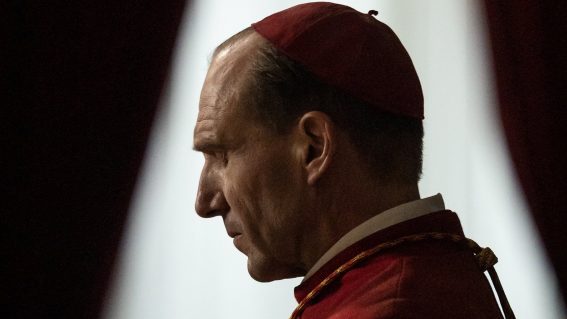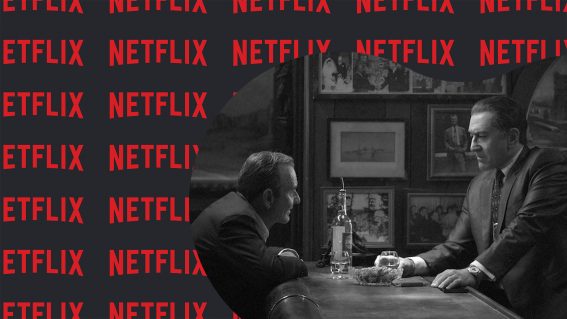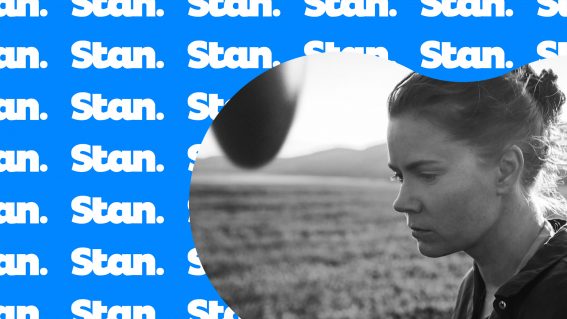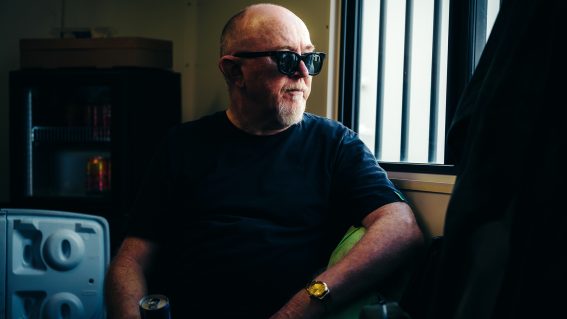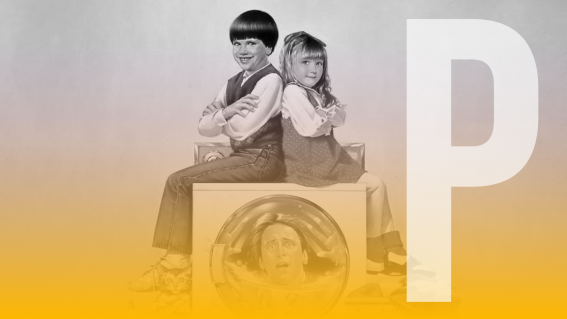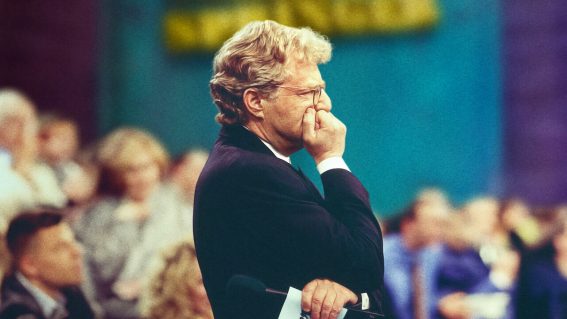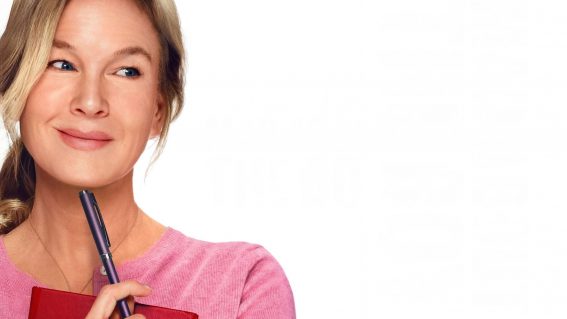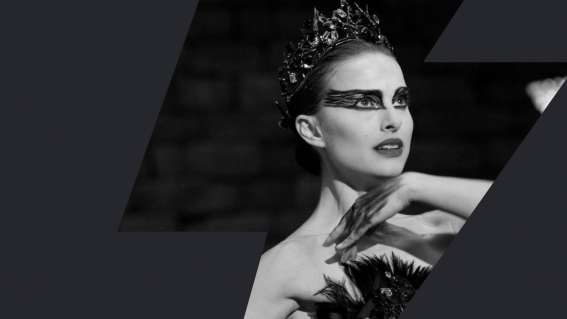We talk to Tarantino, DiCaprio, Pitt and Robbie about Once Upon a Time… in Hollywood
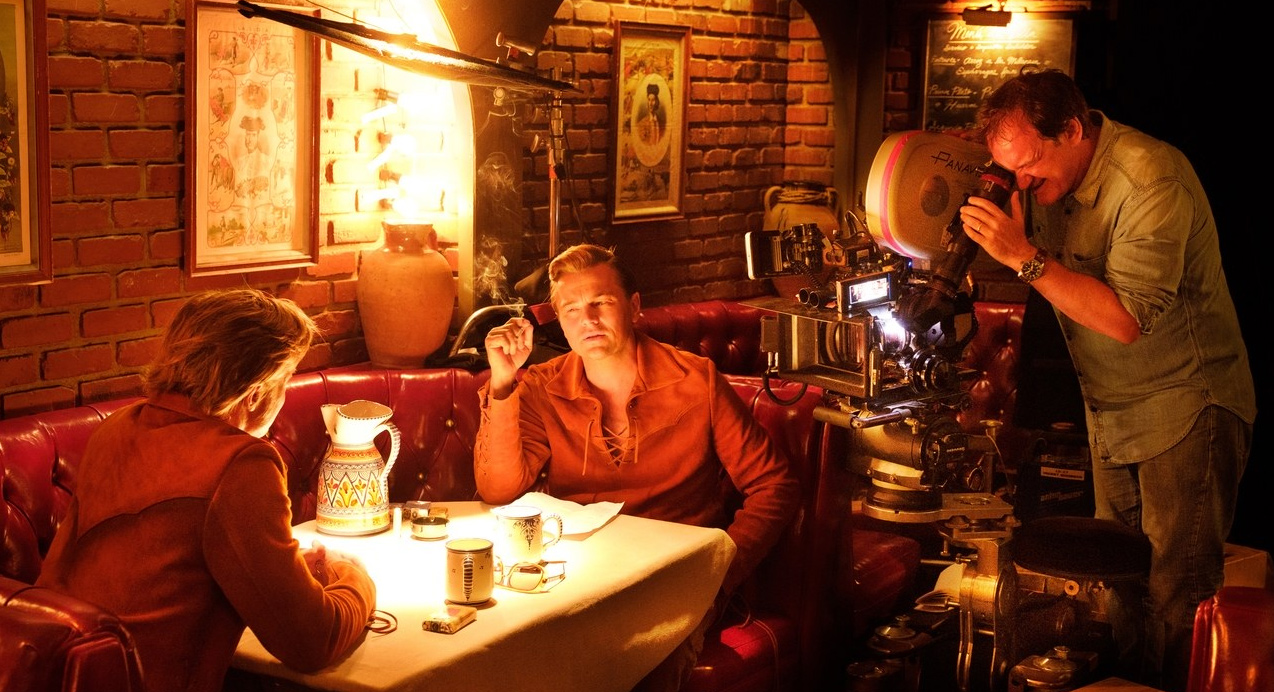
It’s the film everybody’s been talking about, from a certain director named Quentin Tarantino. Dominic Corry sits down with the great auteur and the stars of his new film, which arrives in Australian cinemas on August 15.
For hardcore cinephiles, Once Upon a Time… in Hollywood isn’t just the most anticipated film of the year, it’s a veritable wet dream.
Because it’s not just the latest work from Quentin Tarantino. the world’s most successful cinephile—this is a movie about show business, and it’s set in an artfully recreated and beautifully showcased 1969 Hollywood.
Leonardo DiCaprio stars as Rick Dalton, the former star of a TV Western finding himself decreasingly relevant in a changing Hollywood. Brad Pitt plays Cliff Booth, Dalton’s stunt-double, handyman, and best friend.
In the world of Once Upon a Time… in Hollywood, Dalton lives next door to Sharon Tate (played by Margot Robbie), the real actress who was infamously murdered by the Manson Family in August 1969. How or whether this will impact Rick and Cliff is the biggest question going into the film.
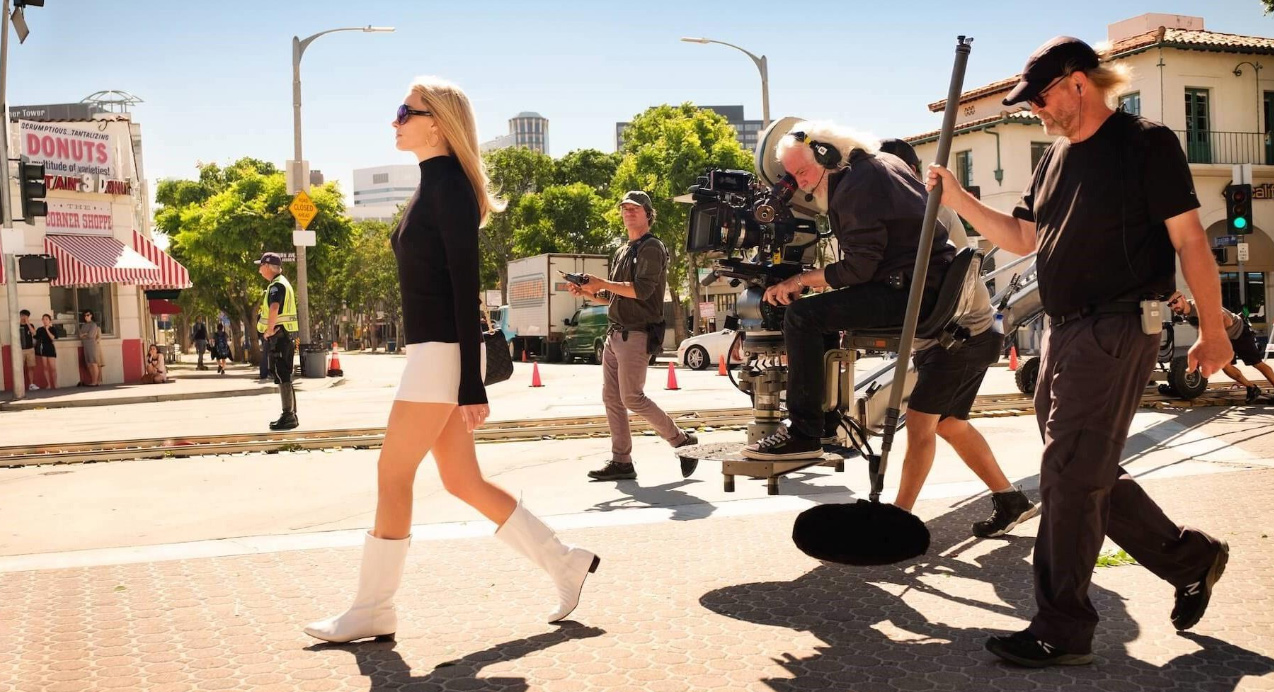
Like most Tarantino movies, Once Upon a Time… in Hollywood isn’t quite what you might expect it to be, yet it nevertheless delivers a lot of what you probably want. Languid without being slow, the characterisations build up appreciably as Tarantino explores the Hollywood of his youth.
As much, if not more, about television as it is about movies, this film very much feels like it has naturally sprung forth from Tarantino’s pop culture mind palace, garnering a huge amount from how it luxuriates in 1969 ephemera, both cultural and geographical.
Tarantino, Pitt, Robbie and DiCaprio all recently got together to discuss the film with some select international press in Beverly Hills, and Flicks was in attendance. Here’s some of what they had to say.
Comments have been edited for length and clarity.
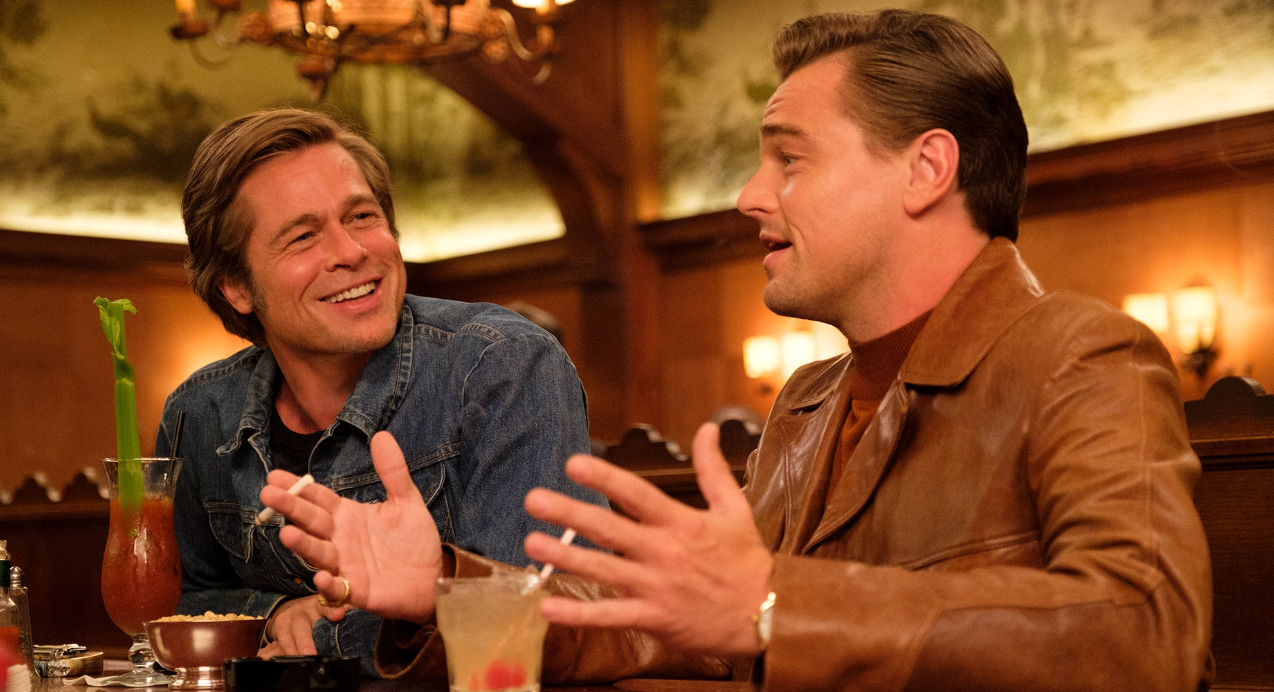
On how the story for this film came about:
QUENTIN TARANTINO: For a long time I’ve wanted to do a movie about making movies. Kind of an interesting subgenre in films, Singin’ in the Rain or Hooper or something. And I kind of wanted to do something that took place in the Los Angeles of my youth, more or less.
But where I got the idea for it was, I was doing a movie, you know, quite a while ago, and I worked with an action-y, kind of an older actor and he had a long-standing stunt double, but we didn’t really have anything for him to do. But there was, like, one gag he could do. And so the actor came up to me and he said, “Hey look, you know, I haven’t really bothered you about it because I don’t want to be a pain in the ass, but I do kind of have a guy, and there hasn’t been anything for him, but there’s that one gag, he could do that. Would you mind?” “Nah, sure bring your guy now. We’ll do it. We’ll do it. We’ll do it.”
And I met the guy, and you could tell that they’d been working together for 15 years, and you can tell that a long time ago you probably could have shot close-ups with the stunt guy and they would have looked right. But 15 years later, they had all both aged, and this is probably the last time they’re going to be working together. Maybe one more time. And they had a very interesting dynamic because the stunt guy was not working for me. He was working for the actor and it didn’t bother me. I didn’t care.
But I thought it was fascinating. I thought it was interesting, just watching them across the set after 15 years together, just talking to each other in their little director chairs dressed in the exact same outfit was kind of a very interesting image. And I go, “Wow, if someday when I do that make that Hollywood movie, that making-of-a-movie movie, I think that’s the relationship I want to deal with. I think that’s a good way into the story.” So that’s more or less the journey of how it all started.
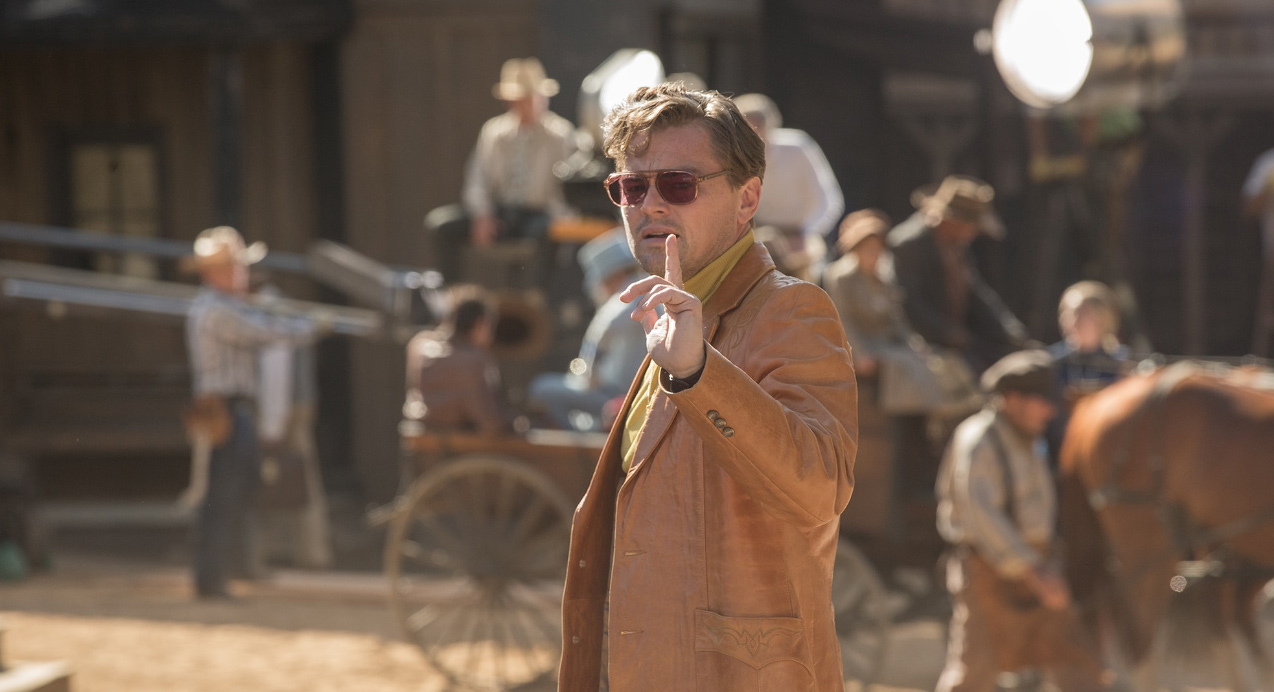
On why they wanted to be involved:
LEONARDO DICAPRIO: Well, first off, I’m a huge fan of films about Hollywood and Tarantino’s take on that, it was very unique—and in relationship to what he was saying earlier, I just love the outsider’s perspective, this voyeuristic look at two kind of working-class guys who culture sort of passed by, the industry had passed them by. Rick Dalton’s sort of a product of the fifties with his pompadour and belongs to this sort of chiseled leading man type, and now, you know, the director’s era is coming and there are androgynous hippy types.
There’s experimentation and he doesn’t know how to fit into this new time period. And the result, that affects his best friend and stunt double, Cliff, as well. And I love the aspect of them looking at this sort of castle next door that is Polanski and Sharon Tate and this Hollywood that they never really belonged to but are trying to fit into.
And I also love the perspective of it being a sort of slice of life in these two days where you learn so much about these characters and you [Tarantino] sort of created this mood, this tapestry, and you learn so much about who these people are within this limited timeframe. I thought it was just a beautiful mechanism to tell a story like that.
BRAD PITT: Well, I mean first it’s Quentin. You know, he calls and we’re all gonna show up because he’s carved out his own vernacular in his contribution to cinema. And it’s such fun for us because it’s some of the best dialogue you’ll ever get to chew on. And it’s the, it’s the joy in the process. I mean, there’s the end result which we’re always striving for, but I find the process and, you know, how we’re experiencing our life, dedicating months and months to a project every bit as important and this one did not disappoint either.
MARGOT ROBBIE: [It was] beyond anything I could have ever imagined. I just wanted to see him work at some point. I said that I’d happily just work at craft services. I just wanted to see one of his sets and kind of how it ran, and I definitely got to see a lot. It was nice. I was still coming to set when I was definitely done shooting.
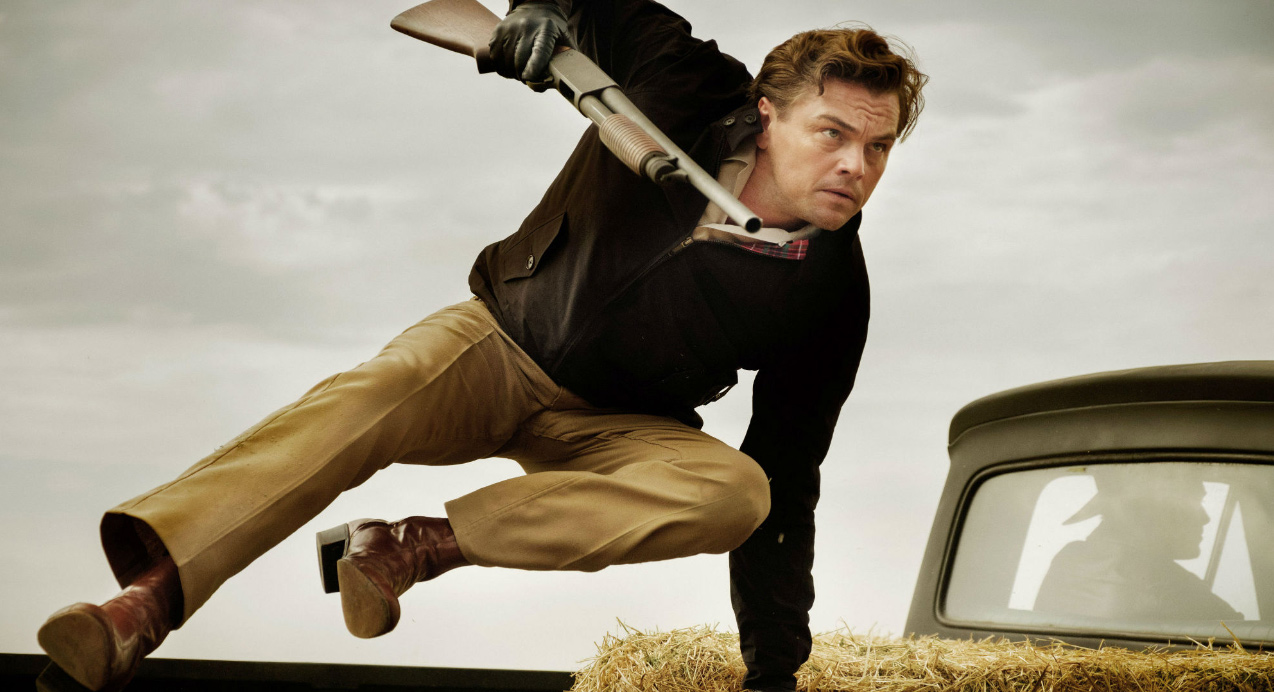
On shooting all the extra bits of Rick’s acting career that pepper the film, most notably his (fictional) TV western Bounty Law.
TARANTINO: Literally, that probably was the hardest thing in the movie, because naturally, I could spend an hour showing every movie Rick ever did, alright. I could film five episodes of Bounty Law and show them all, alright. We could have spent just a month doing a season of Bounty Law and I would’ve been the happiest man on planet Earth. And the only way to do that kind of stuff is to commit to it totally and fully, and then kill yourself paring it down so it can just fit into your movie.
So, like, just as an example, you know, we shot the whole opening of Bounty Law, the whole opening scene that would lead to the bumper and everything. And so that whole sequence is done, alright. Now, this much [pinches fingers] of it ended up in the movie. But I mean, frankly, it was one of the things I was the most proudest of because it looked just like Wanted Dead or Alive. It didn’t look like we were trying to make it look like a fifties half-hour western. It looked like a fifties half-hour western.
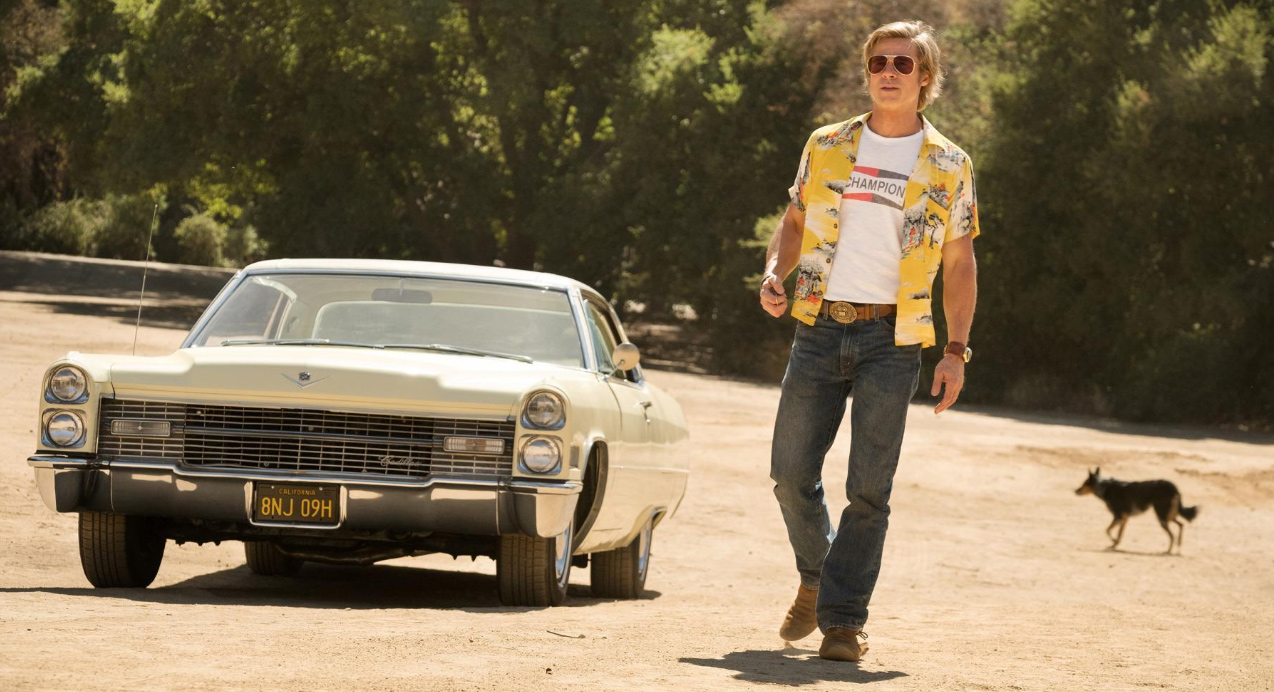
On the appeal of exploring old Hollywood:
DICAPRIO: In the research for Rick Dalton, I just learned so much about these subgenres and these actors that were really the inspiration for Rick Dalton, whether it would be Eddie Burns or Ty Hardin or Ralph Meeker, careers that I think in a lot of ways, as a cinephile, Quentin really has celebrated. And when you talk about an actor like Ralph Meeker, who you may or may not know, that’s literally one of his favourite actors of all time. And this is an actor I’ve never heard of.
We went into his catalogue, his resume of filmmaking, of television, and you start to say, wow, this guy sort of disappeared historically. But the impact that you feel emotionally from watching his work and the sort of D-genre of films or television that I’ve never been exposed to, it was an amazing learning, history process and part of the connection that I think he’s trying to make with his love of this town and the industry of all those that may have not had those careers that we all talk about, but made their own significant artistic contribution.
[Note. Ralph Meeker starred in the 1955 Mike Hammer classic Kiss Me Deadly, which inspired the “glowing item in suitcase” plot device in Tarantino’s Pulp Fiction].
PITT: Well, it was nice going back and looking at the relationships they had between actor and stuntmen, like Burt [Reynolds] and Hal Needham or Steve McQueen and Bud Ekins—Bud, who I’d gotten to meet before he passed—and it was a different relationship. They really relied on each other. The director relied on them more to come up with sequences, and there there was a real partnership.
We have it in different ways with our long term friends and other people from the crew. I liked seeing people hustle for work, because we see a film but, you know, on set there’s a hundred people, there’s probably 300 on production, and there’s still hustling for work, always hustling for work. What’s the next job gonna be?
I also like to see this point of change, this is a pivot as the studios had been struggling, and then along comes Bonnie and Clyde and Easy Rider and it shakes things up, and in the 90s you know, we’d hit… kind of hit a wall with Stallone and Schwarzenegger movies, and up comes this kid Tarantino and suddenly this independent cinema is off and running.
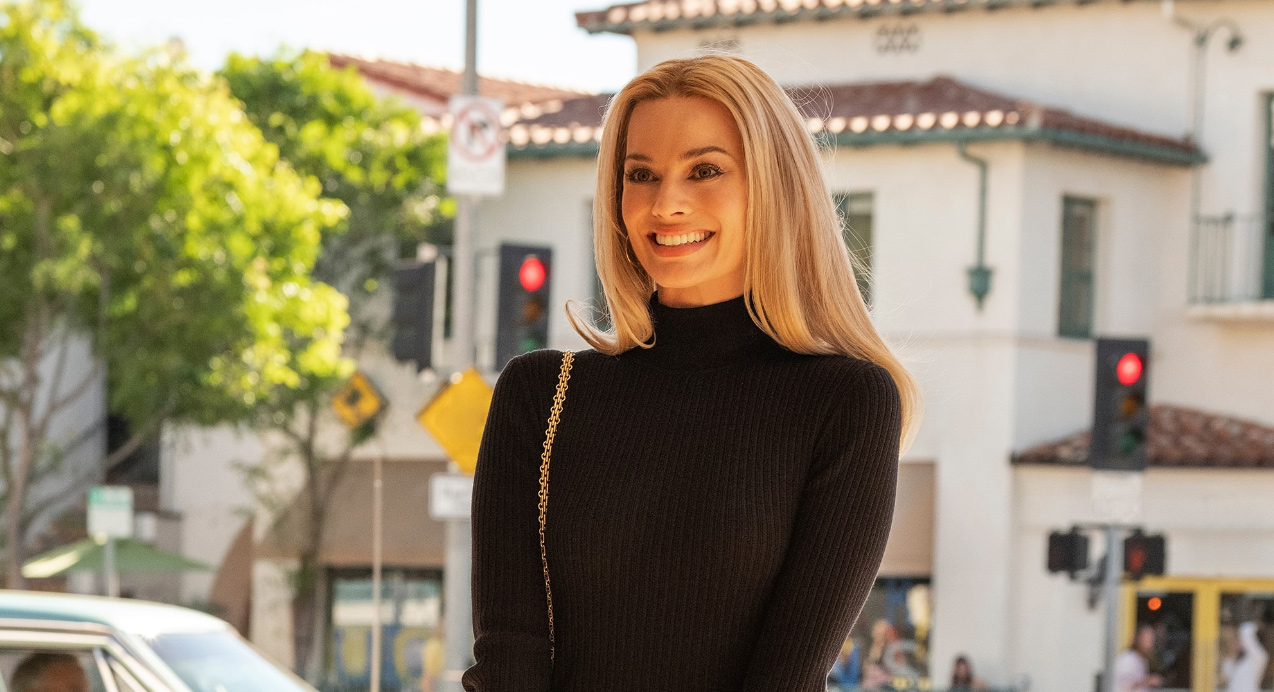
ROBBIE: Something that I really appreciated was getting to play the person who is looking around Hollywood seeing it for all the opportunity and wonderfulness that it has to offer. And I remember feeling that. I remember having that feeling. I remember sitting there being like, “This is so exciting. I’m doing what I love and I’m so lucky and this is so fun and everything’s amazing.” And I feel like I’ve got to do that with Sharon, which was incredible.
And not only that, but Raf [al Zawierucha], who plays Roman Polanski, it was his first time in Hollywood, his first time in LA, his first time in America as a Polish actor. He’s suddenly doing a Tarantino film, and I got to be with him while he had that moment that I had when I did The Wolf of Wall Street, I was like, “I’ve just gotten to America and I’m doing this movie,” and he’s having the exact same… he’s like, “I’ve just gotten to America and I’m doing this.”
It’s just like this really beautiful thing that we got to kind of experience together. It just builds up that appreciation for our work and our job, and Hollywood, old and new, is just exciting.
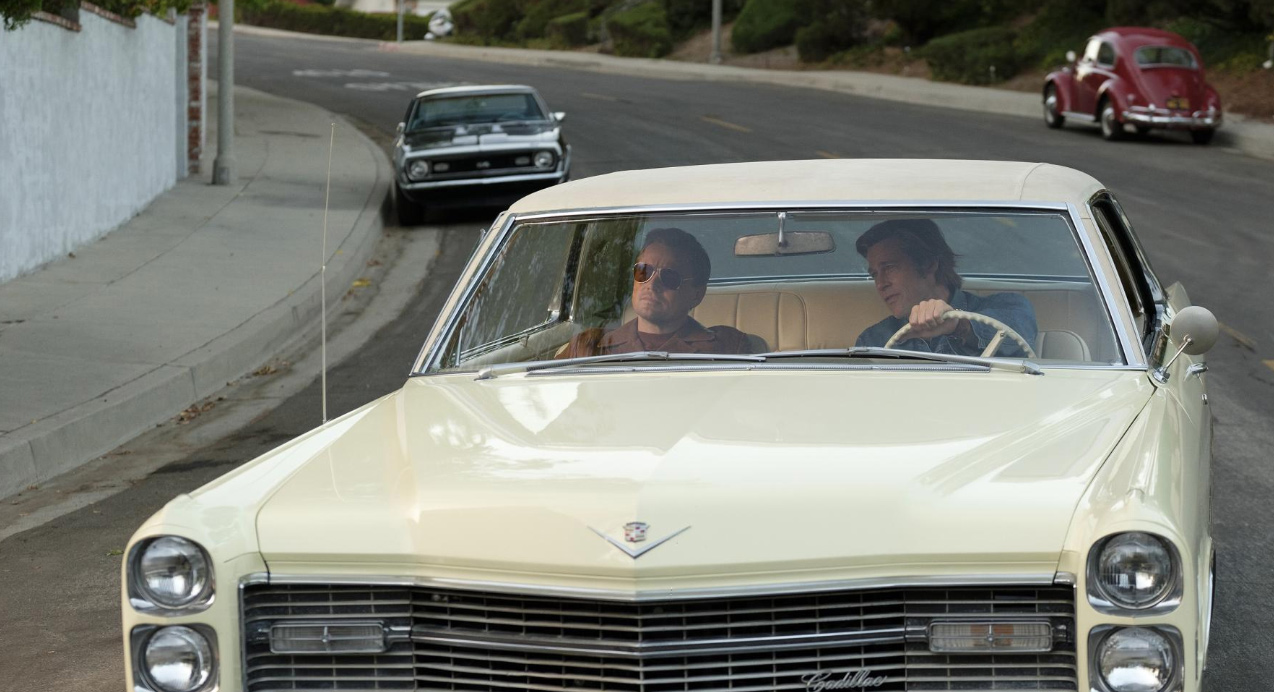
On the thinking behind what parts of Los Angeles he wanted to showcase in the film:
TARANTINO: It’s interesting because I had to find streets that had enough recognisable of what was there in 1969, and not too many bogeys that we couldn’t get rid of, because we didn’t want to CGI erase stuff.
We wanted to, well, camouflage it, alright. But we didn’t want to erase it. We wanted to do it old-school. We built it, you know, Art Direction does it. And so for something like… we knew we wanted Hollywood Boulevard because as much as that’s changed, the fact that even though they’re not theaters anymore, the fact is that most of those marquees are still there. Well, that’s what you need. That’s your Tarzan vine, and even the places, even if it’s turned into a health food store or the Rusty Mullet or whatever….
DICAPRIO [interjects]: Hey, that’s my friend’s bar.
TARANTINO: Look, buddy, I’m just trying to say it wasn’t there in ’69. That’s all I’m saying. I don’t think anyone knew what a mullet was back then.
So the thing about it is that’s there, but it actually is still the same building that it was before. So that’s kind of easy to turn into a Tiki bar or something like that. Oh okay, here’s a little shop next to the Vogue that sells t-shirts for the tourists. We turn it into an Orange Julius, and that was really great. That was do-able.
And then, you know, we can get about like three blocks, we can get about four blocks, you know, Brad could drive down this street and we don’t have to cut for like at least four blocks before we get to this and that. So it was finding places like that. So we did that. We found Riverside Drive, we were able to do that there, you know.
So it was just about finding the places that still had good landmarks. Hopefully, they weren’t like the kind of landmarks that are used time and time again. But it was just about, did I have enough connective tissue from back then to film a street and were there too many bad things that we can’t see.
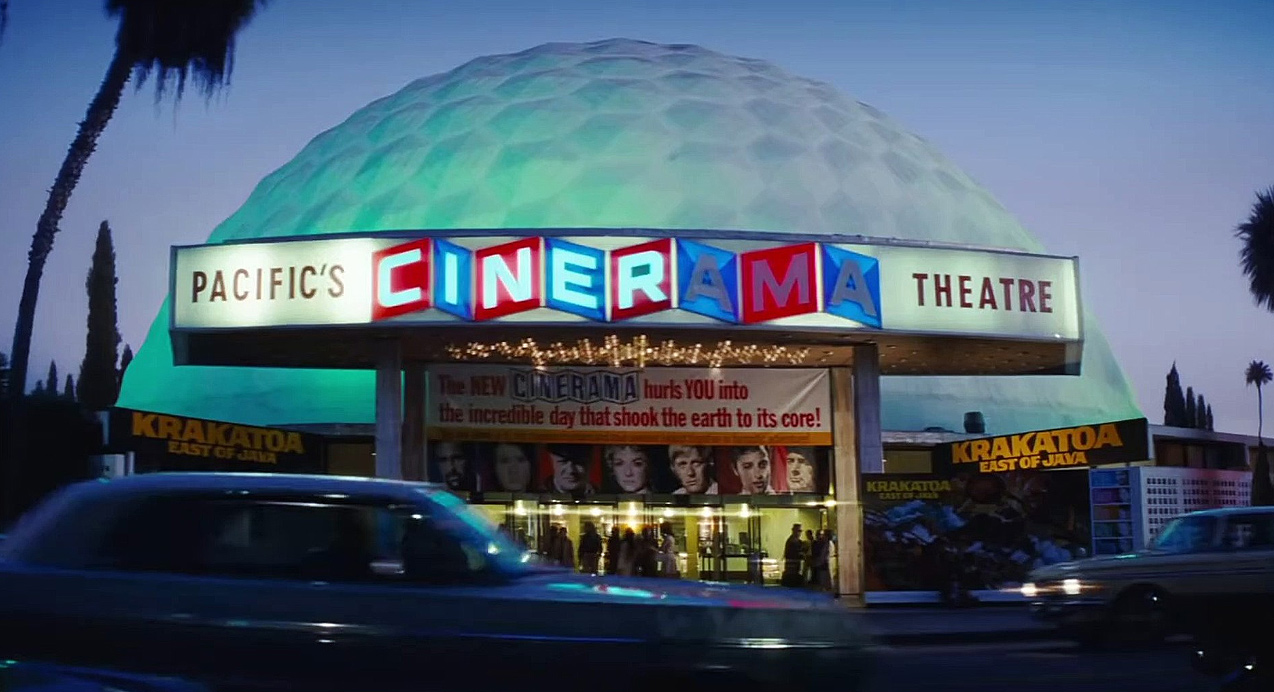
On what it was like to shoot in a 1969 Hollywood recreated on location:
DICAPRIO: Being a native of Los Angeles, it was fascinating to see how much has kind of remained the same as well, and not having grown up in the ’60s seeing Hollywood Boulevard for example. I had this romanticised view of what 1969 would have looked like, but it was a lot of hippies and head shops and tie-dye, you know. It was a lot trashier. I remember going up and down Hollywood Boulevard in the ’80s, but the ’60s was actually a step below that in a weird way.
To be able to immerse yourself in that, I mean it became a sort of Instagram phenomenon for people to be able to completely envelop yourself. Not only that, to see the extras and those moments where you’re really transported back in time. It’s incredible. And as an actor it just, it feeds those little nuanced moments of reality.
[Dominic himself had that immersive experience when he stumbled across the set in Hollywood one day]
On whether the film is a love letter to Hollywood, or an indictment of it:
TARANTINO: I think it’s mostly a love letter, but I don’t think it has quite as much nostalgia as a lot of people are saying. Not that nostalgia is a bad thing. But I don’t think it has complete rose-coloured glasses. So I think it’s 75% a love letter but I think there’s a 25% criticism.


